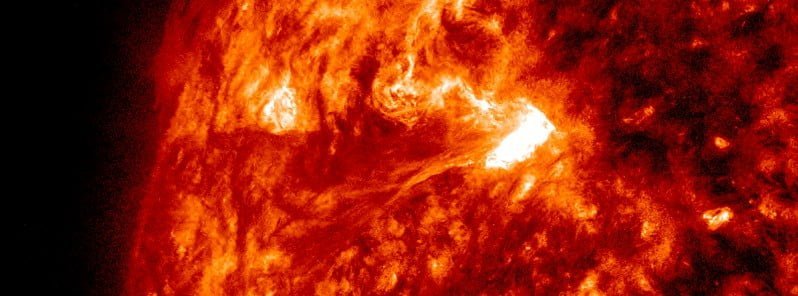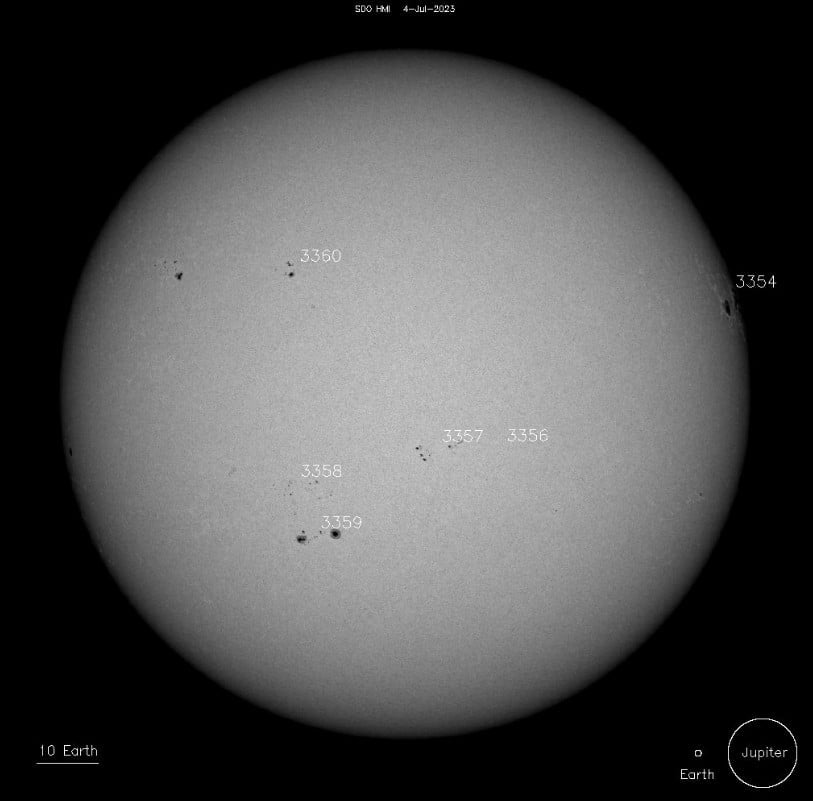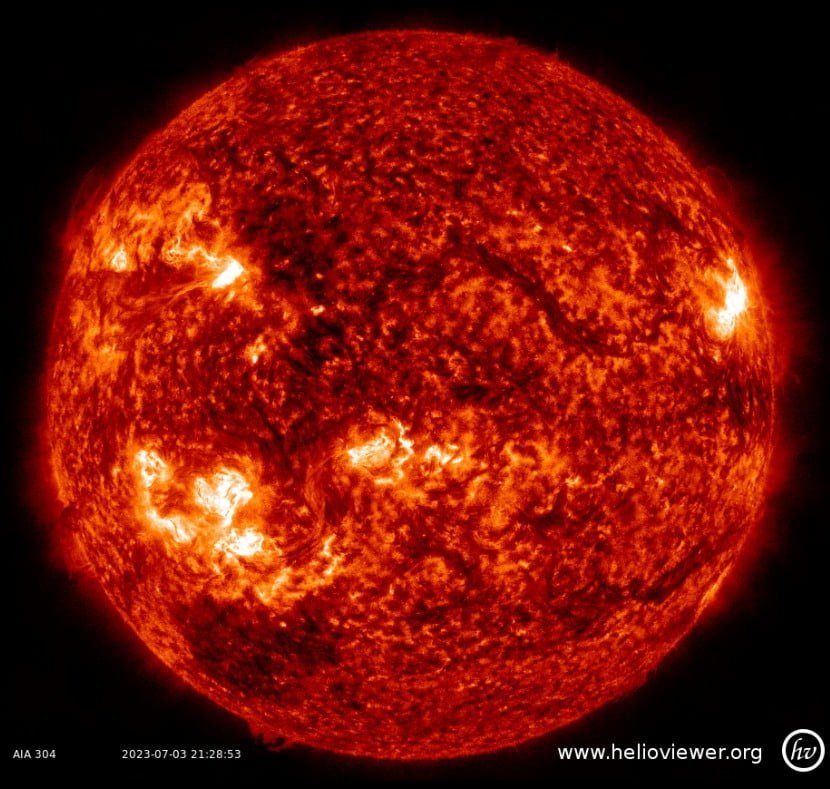Slow-moving Earth-bound CME estimated to arrive July 9 – 10

Active Region 3360 (beta) produced a C8.9 solar flare on July 3, 2023, producing an Earth-directed coronal mass ejection (CME) which is expected to hit Earth on July 9 or 10. The event started at 21:02 UTC, peaked at 21:12, and ended at 21:22.
This event was associated with a Type II Radio Emission with an estimated velocity of 354 km/s between 21:15 and 21:22 UTC. Type II emissions typically indicate a CME is associated with a flare event.
An associated CME was observed in LASCO C2 coronagraph imagery emerging from the east-southeast limb at approximately 21:36 UTC.


“This slow-moving CME was modeled and determined to likely have an Earth-directed component with an arrival of late July 9 into July 10,” SWPC forecasters said at 12:30 UTC today.
Solar activity is expected to continue at low levels through July 6 with a high chance for M-class flare activity and a slight chance for X-class flares through July 4 as AR 3354 exits the northwestern limb. M-class flare chances decrease to just a slight chance by July 5.
The greater than 2 MeV electron flux reached high levels in 24 hours to 12:30 UTC today, with a peak flux of 3 080 pfu at 15:15 UTC on July 3 while the greater than 10 MeV proton flux was at background levels. The greater than 2 MeV electron flux is expected to reach high levels through July 6 and there is a slight chance for a greater than 10 MeV proton event exceeding the S1 – Minor threshold due to the flare potential of Region 3354 on July 4. Background levels are expected thereafter as AR 3354 moves well beyond the western limb.
Solar wind parameters, as measured by the ACE spacecraft, reflected an ambient-like state. The total field ranged 5 – 7 nT, and the Bz component was at or near neutral with no significant, sustained southward deflections. Solar wind speeds were mostly sub 400 km/s averaging near 370-375 km/s. Phi was in a positive solar sector.
Weak negative polarity coronal hole high speed stream (CH HSS) effects are expected on July 4 and 5, while nominal conditions are expected on July 6.
The geomagnetic field was quiet levels and quiet to unsettled levels are expected on July 4 and 5 due to weak CH HSS effects. Quiet levels are expected on July 6 with a nominal solar wind.
References:
1 Forecast Discussion Issued: 2023 Jul 04 1230 UTC – Prepared by the U.S. Dept. of Commerce, NOAA, Space Weather Prediction Center
Featured image credit: NASA SDO/AIA 304

Commenting rules and guidelines
We value the thoughts and opinions of our readers and welcome healthy discussions on our website. In order to maintain a respectful and positive community, we ask that all commenters follow these rules.